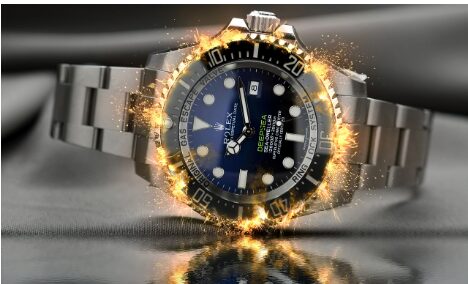The wrist watch is far more than just a device to tell time—it’s a symbol of craftsmanship, personal style, and technological innovation. From its early beginnings as a fashion accessory for the elite to becoming an everyday essential and collector’s treasure, the wrist watch has evolved remarkably over the decades. In this article, we’ll explore the fascinating journey of the wrist watch, highlight why winding vintage watches are so important, and share tips on maintaining these timeless pieces.
The Birth of the Wrist Watch
The origins of the wrist watch trace back to the 16th century when small portable clocks became fashionable among the European aristocracy. Initially, watches were worn around the neck or carried in pockets. It wasn’t until the late 19th and early 20th centuries that wrist watches gained popularity—especially among military personnel who needed a practical, quick way to check the time during combat.
By the 1920s, wrist watches became a mainstream fashion statement for both men and women, with famous brands like Rolex, Omega, and Cartier leading the charge.
The Wrist Watch in the 20th Century: Innovation and Style
The 20th century was a golden era for wrist watch innovation. From the invention of the automatic movement to the introduction of quartz technology in the 1970s, wrist watches constantly adapted to modern needs.
Luxury watches also became a mark of status. Influential figures like Elon Musk showcase the enduring allure of a premium timepiece. If you’re curious about what the tech titan wears, explore the elon musk wrist watch collection to see how watches still hold significant cultural value today.
The Importance of Proper Winding for Vintage Watches
Vintage wrist watches are delicate works of art that require special care. Proper winding is crucial to maintain the mechanical movement and ensure the watch runs smoothly. Neglecting to wind your vintage watch correctly can lead to mechanical issues or irreversible damage.
Winding helps evenly distribute lubricants inside the movement, keeping all parts operating efficiently. Without it, a vintage wrist watch might lose accuracy—or worse, stop working altogether.
How to Wind a Vintage Wrist Watch: Step-by-Step Guide
Winding a vintage wrist watch is simple but must be done carefully:
- Remove the Watch: Always remove your watch from your wrist before winding to avoid putting strain on the crown.
- Locate the Crown: Identify the small knob (crown) usually located on the right-hand side.
- Turn the Crown Slowly: Wind the crown clockwise slowly and steadily. A typical watch requires about 20-30 turns.
- Stop When You Feel Resistance: Do not overwind. Once you feel a slight resistance, stop winding immediately.
Perform this winding process daily, preferably at the same time each day, for optimal performance.
Common Mistakes Beginners Make When Winding
When learning to care for a vintage wrist watch, beginners often make these mistakes:
- Overwinding: Turning the crown too many times can damage the movement.
- Winding on the Wrist: Twisting the crown while wearing the watch can stress and misalign components.
- Ignoring Resistance: Not stopping when resistance is felt can break internal springs.
Taking time to wind your watch properly preserves its mechanics and longevity.
The Role of Watch Winders in Preserving Vintage Timepieces
If you have a collection of automatic watches, a watch winder can be an essential tool. A Mozsly watch winder helps keep your automatic watches running smoothly by mimicking the natural movements of the wrist.
Using a Mozsly watch winder ensures that your watches stay lubricated and ready to wear at any time without manual winding. It’s an ideal solution for collectors who rotate between multiple pieces or want to avoid manually winding watches every day.
Tips for Long-Term Care of Your Wrist Watch
Maintaining a vintage or luxury wrist watch requires attention and love. Here are some valuable tips:
- Service Regularly: Have your watch professionally serviced every 3-5 years.
- Store Properly: Keep your watches in a cool, dry place, preferably in a watch box or safe.
- Avoid Magnets: Exposure to magnetic fields can disrupt a mechanical watch’s accuracy.
- Clean Carefully: Gently clean the case and bracelet with a soft cloth; avoid water unless your watch is specifically water-resistant.
Following these practices will ensure your wrist watch remains a cherished heirloom for years to come.
Conclusion
The wrist watch is more than a timekeeping device—it’s a historical artifact, a fashion statement, and a personal legacy. From its early days gracing the wrists of nobility to becoming essential accessories for modern innovators like Elon Musk, the wrist watch continues to evolve and inspire.
By learning proper winding techniques, avoiding common mistakes, and using trusted tools like a Mozsly watch winder, you can keep your prized timepieces running smoothly for generations. Treat your wrist watch with the care and respect it deserves, and it will reward you with timeless beauty and reliable performance.



































